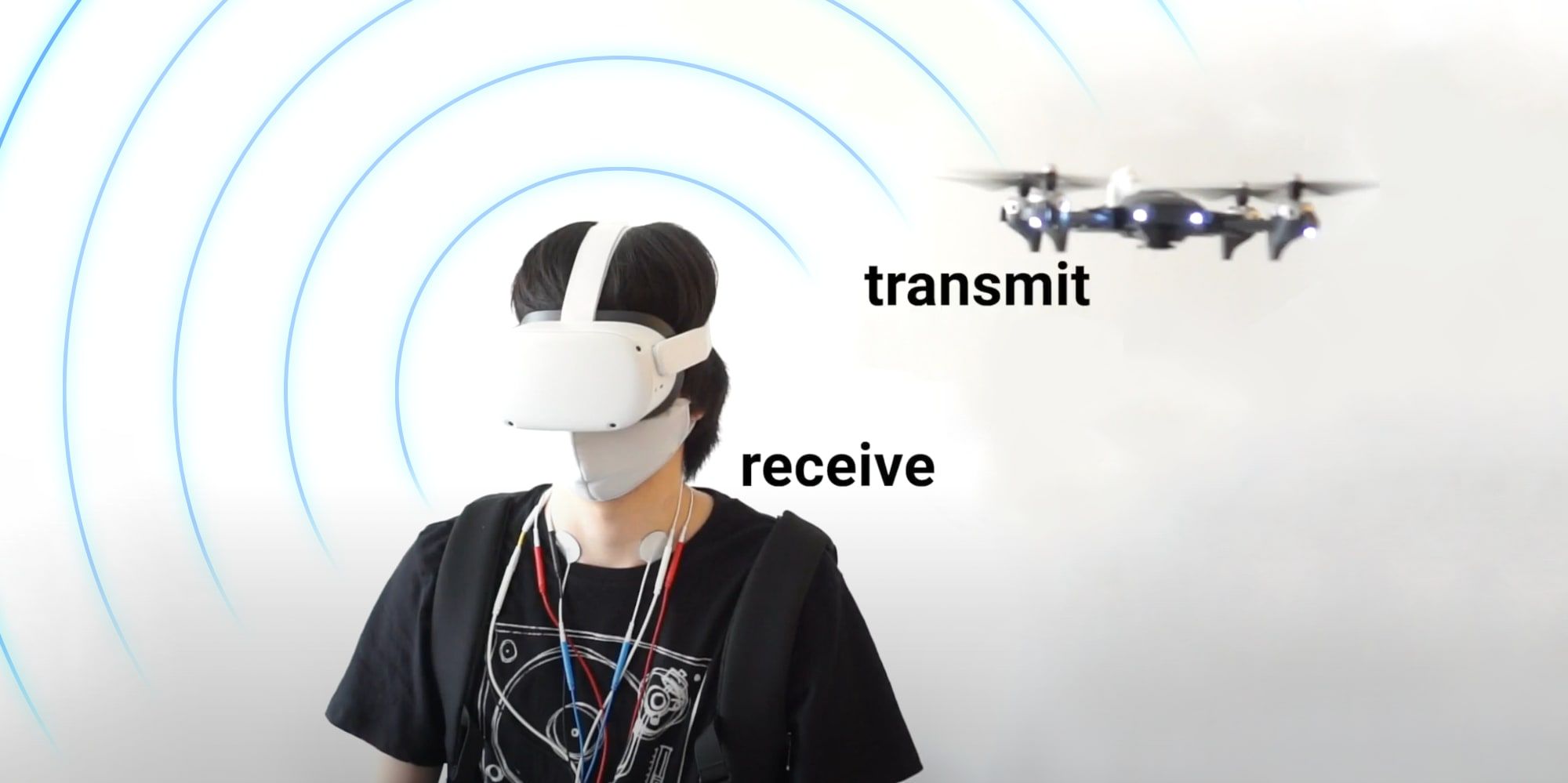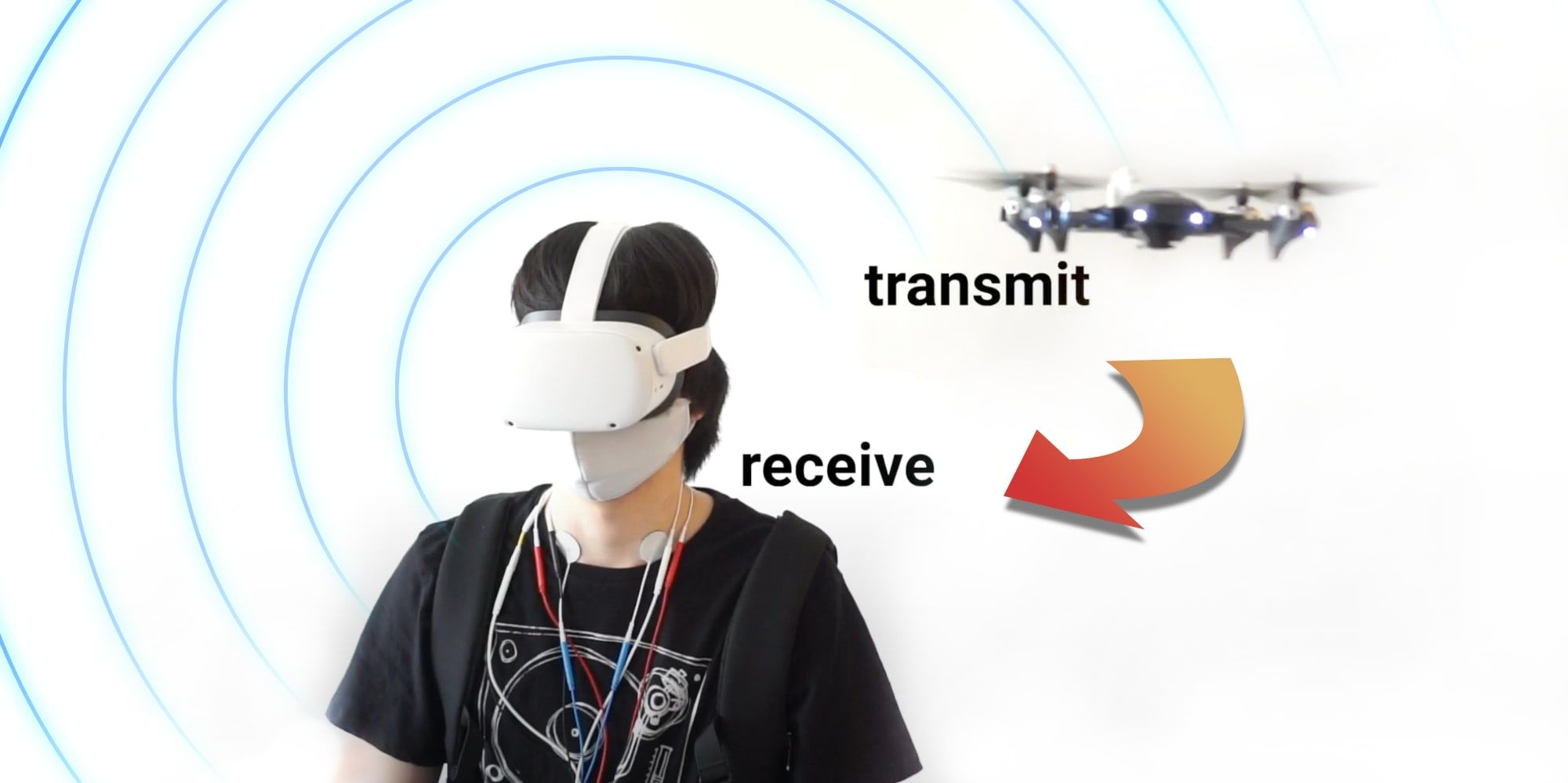A wild new VR technology has been developed that allows remote control of muscles in the human body in a laboratory setting. While the technique itself is well established, known as electrical stimulation of a muscle, this application is unique. Researchers used various combinations of this EMS technology with AirPods, a VR headset, a drone, and a guitar for impressive demonstrations of practical uses.
A particular challenge in VR app development is guiding the user to look in a particular direction. This is different than presentations made on a TV, computer monitor or smartphone where there's no doubt about where the action will take place. VR creates an entire world surrounding the user so important details might appear anywhere, including to the right, left, above, below, and even behind. If there are objects that might obscure vision like a table, walking and bending might be needed to see something.
Researchers at the University of Chicago have been exploring new ways to use electrical muscle stimulation (EMS) in combination with advanced consumer electronics. The end result is actually remote controlling the human body. Spotted by VRScout, this wild new application of EMS might sound frightening without the right context but it can be a very useful tool for remote education and guidance. A demonstration combined EMS and VR so the user's head could be turned toward a virtual fire when they couldn't spot it on their own. A YouTube video shows the technology in action.
AirPods Provide Remote Rhythm Cues
By tracking the head movements of an AirPods user with the accelerometer data from the earbuds, it's possible to control the tilt of another person's head via neck-mounted EMS. The nodding heads were synchronized, effectively transmitting the song rhythm to the second person. In a related demonstration, fingers were manipulated by EMS and guitar training was shown with this method.
Initially, the idea of being remote-controlled sounds horrific, but the examples illustrate how this can be very effective in some situations. The researchers managed to use all of the latest technology and another demo included neck movement being controlled by a drone pilot. When the drone turned, a person turned to look in the same direction. This can be helpful when trying to communicate directional information and is faster than simply overlaying an arrow or using sound in a VR or AR headset.
Source: University of Chicago, VRScout, University of Chicago/YouTube



